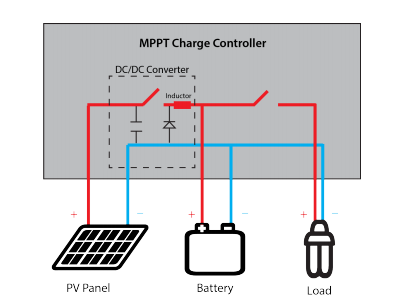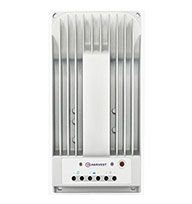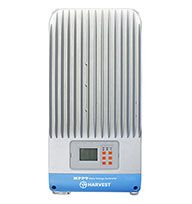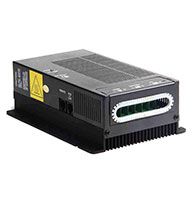Maximum Power Point Tracking (MPPT) Charge Controller
A MPPT, or maximum power point tracker is an electronic DC to DC converter that optimizes the match between the solar array (PV panels), and the battery bank or utility grid. To put it simply, they convert a higher voltage DC output from solar panels (and a few wind generators) down to the lower voltage needed to charge batteries.
The PWM controller is in essence a switch that connects a solar array to a battery. The result is that the voltage of the array will be pulled down to near that of the battery.
The MPPT controller is more sophisticated (and more expensive): it will adjust its input voltage to harvest the maximum power from the solar array and then transform this power to supply the varying voltage requirement, of the battery plus load. Thus, it essentially decouples the array and battery voltages so that there can be, for example, a 12 volt battery on one side of the MPPT charge controller and a large number of cells wired in series to produce 36 volts on the other.
Maximum Power Point Tracking features an indirect connection between the PV array and the battery bank. The indirect connection includes a DC/DC voltage converter that can take excess PV voltage and convert it into extra current at a lower voltage without losing power.
MPPT controllers do this via an adaptive algorithm that follows the maximum power point of the PV array and then adjusts the incoming voltage to maintain the most efficient amount of power for the system.






